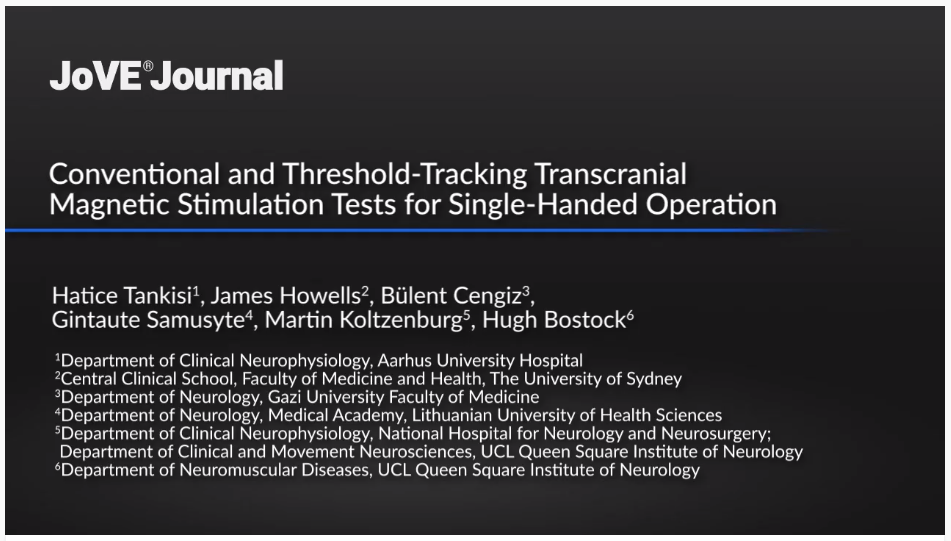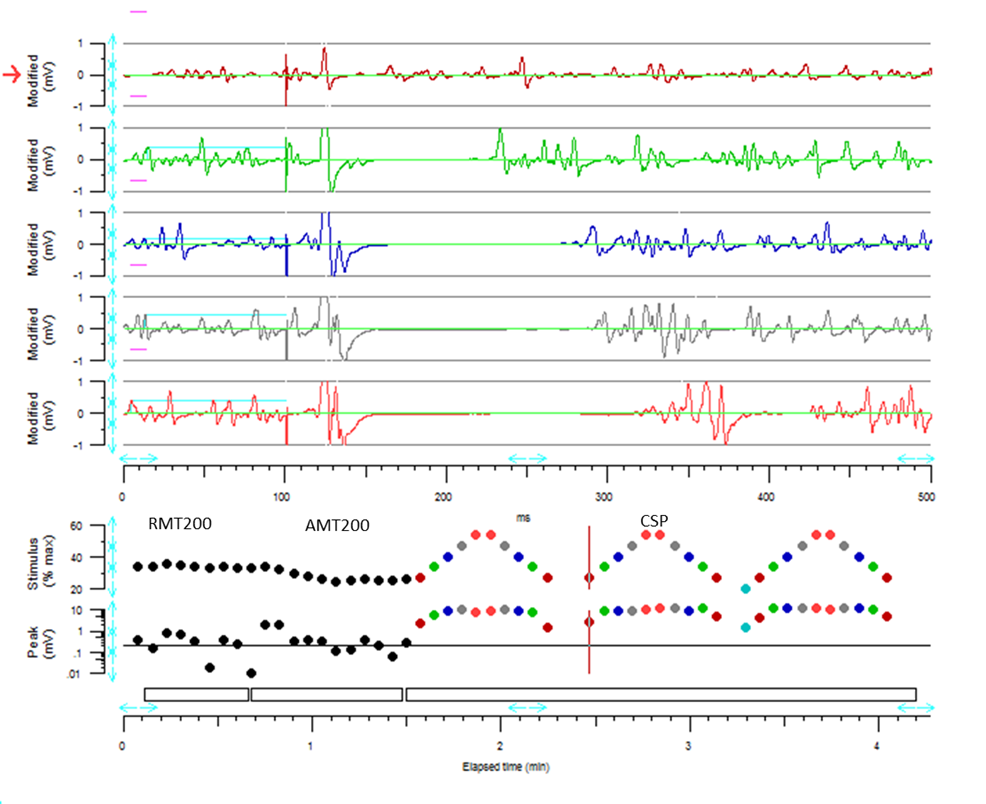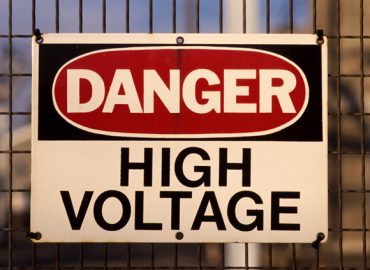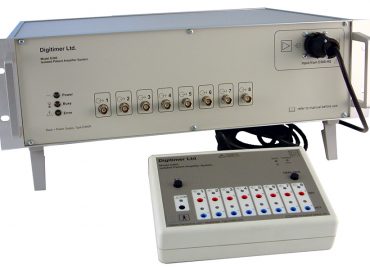Conventional and Threshold-Tracking Transcranial Magnetic Stimulation Tests for Single-handed Operation
Introduction
QtracW is a flexible, stimulus-response data acquisition program with averaging, threshold-tracking and latency-tracking facilities, originally written for studies of human nerves in vivo. In a previous blog article, we announced the availability of the QTMS extension to QtracW, which allows a solo operator to run QtracW TMS protocols and obtain standardized recordings automatically.
Here we share with you an open-access video article published in the Journal of Visual Experiments, where Prof. Hatice Tankisi (Aarhus University Hospital) and colleagues present the suite of standardized single- and paired-pulse transcranial magnetic stimulation (TMS) recording protocols, which include options for conventional amplitude measurements and threshold-tracking. At present, this program can control three different types of magnetic stimulators and is designed to enable all tests to be performed conveniently by a single operator.
What Equipment Do I Need?
As well as a compatible magnetic stimulator, it is necessary to have a valid QtracW/QTMS licence, a suitable isolated EMG amplifier with an analogue signal output, as well as a National Instruments DAQ interface. The video demonstrates use of our two channel D440-2 amplifier and the National Instruments DAQ interface we currently recommend is the USB-6341-BNC.
For anyone interested in making axonal measurements of excitability, the TMS stimulator would be replaced with the Digitimer DS5 Bipolar Electrical Stimulator.
Obtaining QTMS
The QTMSG series of TMS software protocols can be used only with the QtracS.EXE program. The intellectual property rights of this software, which belong to QTMS Science Ltd., are protected by encryption as a QRPZ (encrypted QRP) file, for use only in conjunction with a particular QtracSP dongle.
Three types of QTMSG QRPZ file can be issued on request:
- A free trial version, for use only during a QtracW 50-day free trial period.
- A 50-day free trial version, for use with a specific QtracSP dongle.
- A regular version, for use with a specific QtracSP dongle, and available for a whole number of months, between 12 and the last month of validity of the dongle.
Requests for quotations should be directed to Digitimer, as we are acting as agents for QTMS Science Ltd. All QTMSG licence or free trial requests must be accompanied by the code of the relevant QtracSP dongle (which can be obtained from the dongle by running the Qtrac utility DongleRead.EXE or DongleCheck.EXE). Free trial versions may only be obtained from Professor Hugh Bostock ([email protected]).
Upcoming Training Opportunities
For anyone interested in receiving some hands-on training in a range of excitability techniques, would like to draw your attention to an upcoming workshop to be held in Aarhus, Denmark from May 9th – 12th. The workshop will cover the various protocols and analysis methods used to examine axonal, muscle and cortical excitability. Led by Prof. Hatice Tankisi and Dr James (Tim) Howells, the course will include lectures by workshop faculty members and eminent invited speakers. Importantly, each day will include practical sessions, allowing delegates to develop the skills required to make successful recordings.
The workshop registration fee covers all tuition and use of equipment, breakfasts, coffee/tea, lunches and dinners during the workshop and 5 nights’ accommodation in a single room in Hotel Comwell. The number of participants will be limited to 50 persons.
To secure a place in the workshop we will require full payment by the 23rd of March, 2022. For further information (including prospectus, programme & registration details) please email [email protected]
Additional References
Kiernan, M. C., Bostock, H., Park, S. B., Kaji, R., Krarup, C., Krishnan, A. V., … Burke, D. (2020). Measurement of axonal excitability: Consensus guidelines. Clinical Neurophysiology, 131(1), 308–323.
https://doi.org/10.1016/j.clinph.2019.07.023
Tankisi, H., Cengiz, B., Howells, J., Samusyte, G., Koltzenburg, M., & Bostock, H. (2021). Brain Stimulation Short-interval intracortical inhibition as a function of inter-stimulus interval : Three methods compared. Brain Stimulation, 14(1), 22–32. https://doi.org/10.1016/j.brs.2020.11.002






